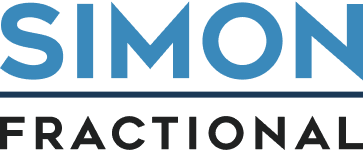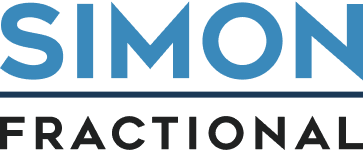According to a recent report by MarketingSherpa, only 22% of B2B companies are satisfied with their conversion rates. That means most SaaS founders leave revenue on the table—not because they lack leads, but because their funnels aren’t working hard enough.
In B2B SaaS, conversion optimization isn’t just about more clicks or prettier CTAs—it’s about aligning your entire buyer journey to accelerate revenue. This blog unpacks how to evaluate and improve your funnel at every stage, with proven strategies that move leads closer to “yes.”
Why Funnel Optimization Matters in B2B SaaS
B2B SaaS funnels are long, complex, and filled with friction. Your buyers aren’t making impulse purchases—they’re comparing vendors, justifying spend, seeking internal buy-in, and waiting on budget approvals.
That means your funnel has to do three things well:
- Educate: High-intent leads aren’t followed up on in time
- Build trust: Reps call leads who aren’t qualified or sales-ready
- Enable action: Prospects hear one story from marketing and a different one from sales
- Poor attribution: Marketing can’t prove ROI because sales doesn’t track sources
- Churn risk: Mismanaged expectations lead to poor onboarding and higher customer drop-off5
Growth-stage bottleneck: Many SaaS companies generate awareness, but can’t convert that awareness into action. The funnel leaks in the middle.
Yet many teams over-invest in lead gen without improving what happens next. If your funnel is only built to attract attention, not convert it, you’re pouring water into a bucket of holes.
Funnel optimization solves this. It turns scattered marketing into a systematic growth engine.
Funnel Stage 1: Top of Funnel (TOFU)
At this stage, the buyer is exploring their problem. Your goal is to earn attention and build relevance.
Common Mistakes:
- Vague messaging
- Too much product talk
- Targeting everyone instead of focusing on best-fit accounts
What Works:
- Educational content (eBooks, webinars, industry guides)
- Social proof (customer logos, reviews, use cases)
- Role-specific messaging (speaking to specific decision-makers)
Optimization Tips:
- Use tools like Clearbit or 6sense to enrich data and segment visitors
- Run A/B tests on landing page headlines and CTAs
- Optimize for mobile—more SaaS buyers are browsing on the go
Pro tip: Track lead source and first-touch attribution. TOFU content that doesn’t lead to MQLs is noise, not strategy.
Also, don’t underestimate retargeting. TOFU visitors rarely convert on the first visit, but well-sequenced remarketing can pull them back with tailored value adds.
Funnel Stage 2: Middle of Funnel (MOFU)
This is where most SaaS funnels stall. Buyers are aware of the problem but need help understanding the solutions. Your job? Be the guide.
Common Mistakes:
- Overwhelming buyers with feature dumps
- No segmentation based on buyer stage or behavior
- Generic nurture emails
What Works:
- Solution comparisons, ROI calculators, demo videos
- Segmented email drips based on interest and behavior
- Live chat or chatbot engagement (especially on pricing/demo pages)
Optimization Tips:
- Use HubSpot or Marketo to trigger smart content and sequences
- Score leads not just on downloads, but on intent (e.g., pricing page visits)
- Interview your sales team to identify drop-off patterns
Execution gap: Marketing and sales alignment is most critical in MOFU. SDRs need context, and marketers need feedback.
Also consider behavior-based triggers. If a visitor watches 50% of a demo video or visits a solution page 3 times in a week, that’s a signal. Smart funnels act on it.
Funnel Stage 3: Bottom of Funnel (BOFU)
Now, the buyer is in evaluation mode, comparing vendors, pricing models, and implementation risk. This is your moment to close.
Common Mistakes:
- Hidden pricing
- No urgency or incentives
- Lack of detailed onboarding expectations
What Works:
- Tailored demo flows based on ICP
- Sales enablement materials (case studies, ROI decks)
- Time-sensitive offers or bundles
Optimization Tips:
- Create landing pages for specific use cases or industries
- Embed testimonials and G2 badges near CTAs
- Use screen recordings (like Loom) to personalize follow-ups post-demo
Decision friction: BOFU doesn’t fail because of price. It fails because of uncertainty. Eliminate doubt, and you unlock speed.
Don’t forget about onboarding as part of your BOFU strategy. Buyers want to know what happens after they sign. A strong onboarding narrative can seal the deal.
Where Founders Get Stuck
Founders often focus on TOFU (ads, content, SEO) while ignoring the back half of the funnel. However, the highest ROI often comes from fixing MOFU and BOFU.
Ask yourself:
- Are we nurturing leads, or just collecting emails?
- Do we offer a frictionless path to demo or purchase?
- What happens after someone raises their hand?
If you don’t know, your funnel isn’t optimized—it’s passive.
Also, founders often mistake activity for progress. A busy funnel isn’t always a working one. Quality, context, and clarity drive conversion, not just volume.
Real-World Results from Simon Fractional
At Simon Fractional, we’ve optimized B2B SaaS funnels across industries:
Ask yourself:
- Re-engaged cold leads: Relaunched nurture flows that generated 1,100 new MQLs in 60 days for a healthtech SaaS
- Cut CAC in half: Revamped offer structure and campaign strategy for a compliance startup, lowering paid acquisition costs by 52%
- Improved conversion flow: Reduced friction in demo booking UX and improved funnel velocity by 37% for a logistics SaaS
- Closed sales loop: Aligned GTM messaging with post-demo follow-up to increase SQL-to-win rate by 21%
- Eliminated drop-off points: Used heatmaps and analytics to diagnose friction points, leading to a 16% lift in demo form submissions
These weren’t giant overhauls. They were focused adjustments based on data, messaging clarity, and sales alignment.
Final Thoughts: Don’t Let a Leaky Funnel Limit Your Growth
You can’t afford to treat your funnel as a static asset. It should evolve alongside your buyers.
When you align funnel stages with what your buyers actually need—and remove friction at every step—you get:
- Better MQL-to-SQL conversion
- Shorter sales cycles
- Lower CAC and higher pipeline ROI
- More predictable growth across quarters
Optimization mindset: You don’t need a new website. You need a funnel that matches how your buyers buy.
Funnel optimization is not about fixing everything at once. It’s about identifying the weakest link and strengthening it. Small tweaks often yield big gains.
Next Steps
Want help optimizing your B2B SaaS funnel for conversion? Let’s map your buyer journey and fix the friction.
Doug Simon
My experience in B2B SaaS started in 2010 when I developed a first-of-its-kind product, creating an entire new category.


